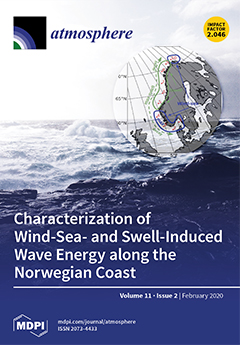Low-cost sensors have become an increasingly important supplement to air quality monitoring networks at the ground level, yet their performances have not been evaluated at high-elevation areas, where the weather conditions are complex and characterized by low air pressure, low temperatures, and high
[...] Read more.
Low-cost sensors have become an increasingly important supplement to air quality monitoring networks at the ground level, yet their performances have not been evaluated at high-elevation areas, where the weather conditions are complex and characterized by low air pressure, low temperatures, and high wind speed. To address this research gap, a seven-month-long inter-comparison campaign was carried out at Mt. Tai (1534 m a.s.l.) from 20 April to 30 November 2018, covering a wide range of air temperatures, relative humidities (RHs), and wind speeds. The performance of three commonly used sensors for carbon monoxide (CO), ozone (O
3), and particulate matter (PM
2.5) was evaluated against the reference instruments. Strong positive linear relationships between sensors and the reference data were found for CO (
r = 0.83) and O
3 (
r = 0.79), while the PM
2.5 sensor tended to overestimate PM
2.5 under high RH conditions. When the data at RH >95% were removed, a strong non-linear relationship could be well fitted for PM
2.5 between the sensor and reference data (
r = 0.91). The impacts of temperature, RH, wind speed, and pressure on the sensor measurements were comprehensively assessed. Temperature showed a positive effect on the CO and O
3 sensors, RH showed a positive effect on the PM sensor, and the influence of wind speed and air pressure on all three sensors was relatively minor. Two methods, namely a multiple linear regression model and a random forest model, were adopted to minimize the influence of meteorological factors on the sensor data. The multi-linear regression (MLR) model showed a better performance than the random forest (RF) model in correcting the sensors’ data, especially for O
3 and PM
2.5. Our results demonstrate the capability and potential of the low-cost sensors for the measurement of trace gases and aerosols at high mountain sites with complex weather conditions.
Full article





